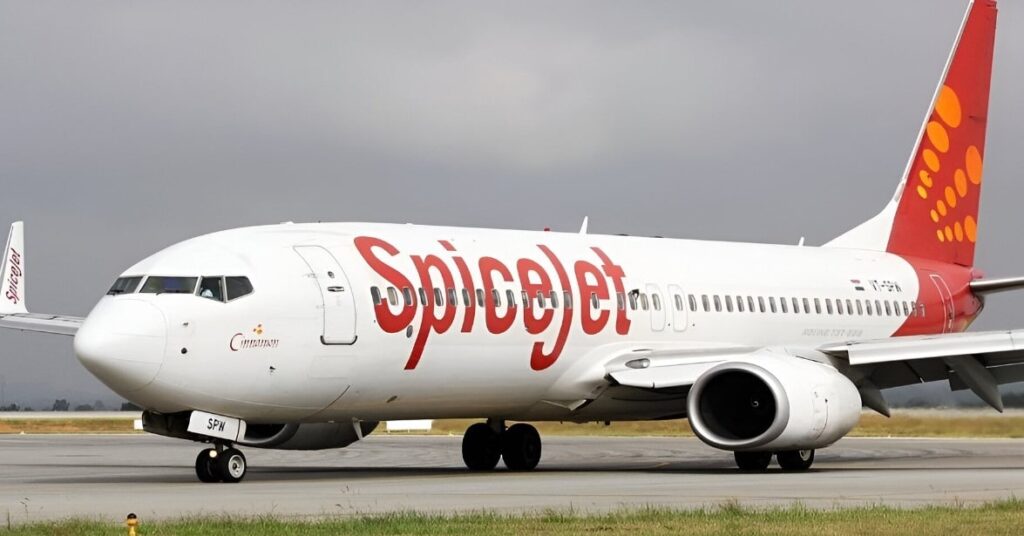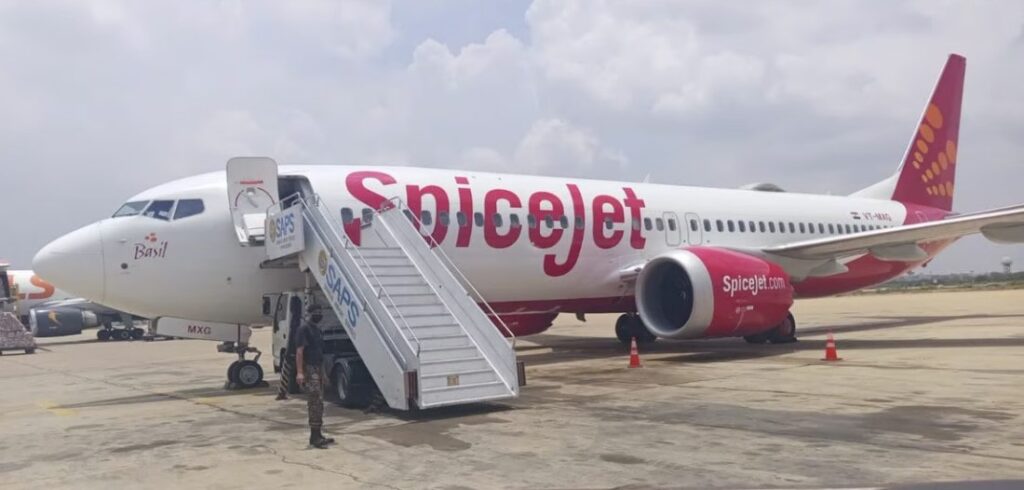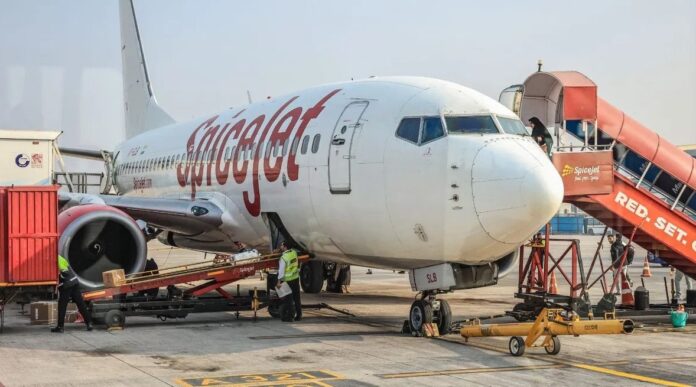The financial health of the airline, market trends, and outside variables like fuel costs and governmental laws are all reflected in SpiceJet share price. Its stock has historically fluctuated as a result of operational difficulties, pressure from competitors, and the effects of world events like as the COVID-19 pandemic, which had a major influence on the aviation sector. SpiceJet has attempted to rebound in spite of these obstacles by implementing cost-cutting strategies, new routes, and reorganization plans. Investors keep a tight eye on its debt levels, fleet expansion, and earnings reports. All things considered, SpiceJet stock is still susceptible to both internal and external events that have an impact on the larger travel and aviation industries.
Understanding SpiceJet: A Brief Overview
Company Background
Low-cost Indian airline SpiceJet was established in 2005 and is renowned for providing reasonably priced domestic and international travel. SpiceJet more than 50 locations with a fleet of mostly Boeing and Bombardier aircraft, and its headquarters are in Gurgaon, India. The airline positions itself as a leader in the Indian low-cost industry by concentrating on making air travel accessible to the general public. Although it confronts competition from other carriers in the expanding Indian aviation industry, it has over the years implemented new services and cost-cutting measures.
Operational Strategies
To increase accessibility and profitability, SpiceJet’s operational initiatives focus on fleet optimization, cost reduction, and route network expansion. The airline employs a low-cost carrier strategy, cutting costs by using a lot of planes, responding quickly, and providing streamlined services. Additionally, it makes use of dynamic pricing and fuel-efficient planes to efficiently control expenses. SpiceJet also prioritizes underutilized routes, taking use of India’s Regional Connectivity Scheme. SpiceJet hopes to improve its market position and handle pressure from competitors in the aviation sector by striking a balance between these strategies.
Factors Influencing SpiceJet Share Price

Market Dynamics
Rapid passenger growth, competitive pricing, and regulatory changes all influence the market dynamics of the Indian aviation sector. Low-cost and full-service airlines compete fiercely with SpiceJet, affecting their profit margins and ticket structures. Costs and demand are significantly impacted by external variables including gasoline prices, exchange rate volatility, and economic trends. Growth prospects are also produced by government programs like the UDAN project, which aims to improve regional connections. Adaptability and an emphasis on cost control and service effectiveness are necessary for navigating these dynamic dynamics.
Regulatory Environment
The Directorate General of Civil Aviation (DGCA) is in charge of India’s aviation regulations, which are impacted by laws that prioritize cost, accessibility, and safety. Regulations affect how airlines like SpiceJet operate and encompass topics like licensing, operating standards, and pricing constraints. Strict safety and maintenance regulations guarantee adherence to policies like the Regional Connectivity Scheme (UDAN), which encourage increased air services to underserved areas. Regulatory flexibility is essential for airline sustainability since variable fuel tariffs and airport fees can put financial strain on airlines.
Competitor Landscape
In India’s quickly expanding aviation industry, SpiceJet confronts competition from major firms like IndiGo, Air India, and Go First. Air India, which is now a part of the Tata Group, is rebranding to increase its market share in full-service products, while IndiGo is the biggest low-cost airline with a wide domestic and international reach. Airlines must strike a balance between price and quality in order to draw customers due to competition. In order to maintain its market position, SpiceJet must also innovate and increase operational efficiency as a result of the increased competition from regional and younger airlines.
Historical Share Price Trends
Initial Public Offering and Early Years
In the midst of India’s burgeoning aviation industry, SpiceJet began its Initial Public Offering (IPO) in 2010 to raise money for fleet development and operational growth. When the airline was founded in 2005, it immediately established itself as a low-cost carrier, catering to tourists on a tight budget. SpiceJet had operational losses and fierce competition despite its quick early growth, which prompted management changes and restructuring initiatives. The airline’s early years were devoted to growing its domestic routes and gaining market share through reasonable rates and prudent cost control.
Recent Performance and Volatility
Market difficulties, regulatory concerns, and financial hardship have all had an influence on SpiceJet’s recent performance, which has been volatile. SpiceJet High fuel prices, the decline in the value of the Indian rupee, and pandemic-related interruptions all contributed to the airline’s losses and cash flow problems. Share prices were impacted by operational difficulties such as grounded airplanes and safety compliance problems, which heightened investor fears. SpiceJet has undertaken cost-cutting and restructuring initiatives in spite of these failures. However, the stock’s erratic performance is still influenced by continued competition and regulatory constraints.
Impact of Events and News
Events and news, including operational problems, regulatory updates, and market trends, have a significant impact on SpiceJet stock price. Investor sentiment has been adversely affected by pilot shortages, aircraft groundings, and safety compliance difficulties. Performance is also impacted by macroeconomic variables such as government regulations, currency changes, and growing fuel prices. Confidence can be increased by positive events, such as the opening of new routes or effective restructuring initiatives. However, the airline’s recovery remains susceptible to high levels of competition and market uncertainty, with both good and bad news leading to abrupt pricing changes.
Investment Considerations for Spice Jet Shares

Risk Assessment
SpiceJet confronts a number of concerns, including as pressure from competitors, currency changes, and financial hardship from high fuel prices. Operational risks that might affect profitability and cause service disruptions include aircraft grounding, safety compliance, and possible workforce shortages. Operations are made more difficult by regulatory concerns, such as changing tax laws and safety regulations. Additionally, market share is at risk due to fierce competition from full-service and low-cost carriers. SpiceJet seeks cost-cutting and restructuring strategies to mitigate these concerns, but outside influences still present major obstacles.
Financial Performance
SpiceJet has had erratic financial results, with profitable spells interspersed with substantial losses. Its finances have been stretched by rising fuel prices, a declining value of the currency, and operational difficulties including aircraft groundings. To increase efficiency, the airline has concentrated on cost control, fleet growth, and reorganization. Route expansion and passenger traffic increase, especially in underdeveloped areas, are the main drivers of revenue growth. SpiceJet is attempting to stabilize its finances despite obstacles, but its profitability is still being impacted by external factors and continuous competition.
Long-Term Outlook
Enhancing operational effectiveness, controlling expenses, and growing its route network are critical to SpiceJet’s long-term prospects. Through regional connection projects in particular, the airline hopes to take advantage of India’s expanding aviation industry. Growth, however, may be hampered by issues including competition, high fuel prices, and regulatory changes. SpiceJet needs to preserve its low-cost carrier strategy, improve its financial standing, and adjust to changing market conditions in order to thrive in the rapidly changing aviation industry.
SpiceJet’s Position in the Aviation Market
Competitive Advantages
SpiceJet low-cost carrier strategy, wide domestic network, and deliberate emphasis on underserved regional routes are its main competitive advantages. The airline gains from cost-effective operations, such as rapid turnaround times and high aircraft utilization. Additionally, tourists on a tight budget are drawn to its capacity to provide reasonable fares. By providing connectivity to smaller cities, the Regional Connectivity Scheme (UDAN) has improved its market presence even further. SpiceJet’s emphasis on fleet optimization and cost-cutting strategies also helps it stand out from rivals in India’s cutthroat aviation market.
Challenges Ahead
Among the many obstacles SpiceJet must overcome is fierce competition from full-service and low-cost airlines, which puts pressure on profit margins. Financial strain is increased by rising fuel prices and volatile exchange rates, and operations may be impacted by regulatory obstacles and safety compliance requirements. Additionally, as the airline continues to restructure, staff stability and fleet management are crucial. Spice Jet needs to overcome these challenges while concentrating on cost reduction and growing its market share in order to be successful.
Future Growth Opportunities
Expanding its regional and international routes and taking use of the Indian government’s Regional Connectivity Scheme (UDAN) to connect underdeveloped airports are key components of SpiceJet’s future development prospects. SpiceJet can improve customer service and fleet efficiency to solidify its position as the domestic aviation industry expands. Alliances and collaborations with other carriers may also lead to the opening of new markets. Long-term development prospects will be further enhanced by making investments in technology, increasing operational effectiveness, and implementing sustainable practices, particularly during the post-pandemic recovery phase.
Technical Analysis of SpiceJet Share Price
Price Movements and Trends
A number of variables, including as operational performance, financial outcomes, and external market circumstances, affect SpiceJet stock price fluctuations. The stock has been volatile, frequently responding to reports of safety mishaps, problems with regulations, and changes in the price of gasoline. While difficulties like losses or aircraft grounding result in drops in investor confidence, positive events like fleet growth or new routes tend to increase it. The stock is also impacted by broader market movements, economic circumstances, and investor mood, all of which contribute to its volatile price patterns.
Support and Resistance Levels
Important technical indicators that assist investors in determining price patterns are SpiceJet stock’s support and resistance levels. Resistance levels show where selling pressure might drive the stock back down, while support levels show the price at which demand is high enough to stop further drops. These numbers change according on news, investor mood, and market circumstances. In SpiceJet instance, resistance levels usually emerge during times of market uncertainty or operational difficulties, whilst previous support levels have frequently been impacted by times of recovery or good news.
Volume Analysis
Volume analysis provides information about market sentiment by tracking the quantity of shares exchanged over a certain time period. While low volumes may indicate hesitancy or lack of confidence, higher volumes frequently indicate considerable investor interest, confirming price changes. SpiceJet Volume movements may indicate investor confidence or a response to news events.




